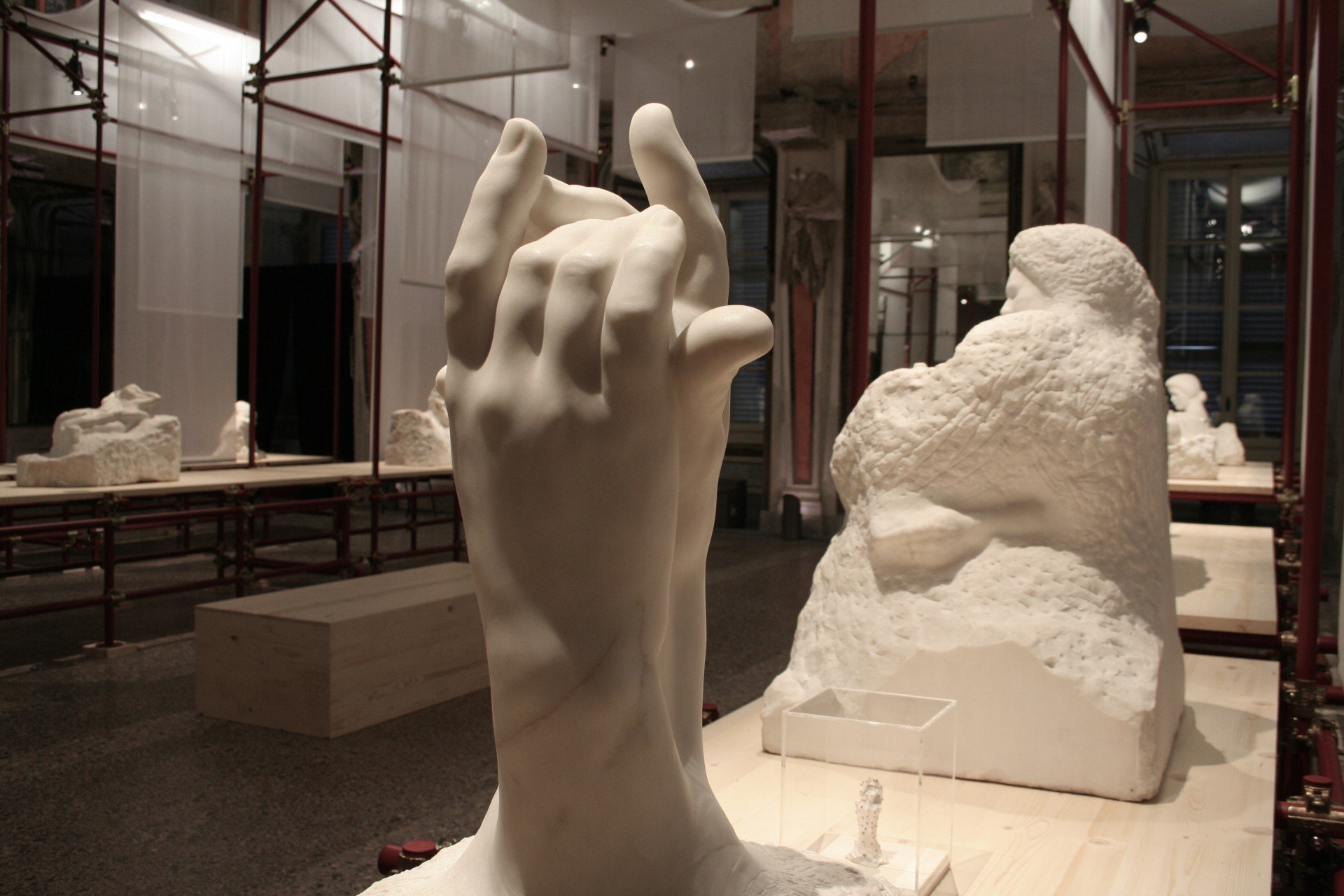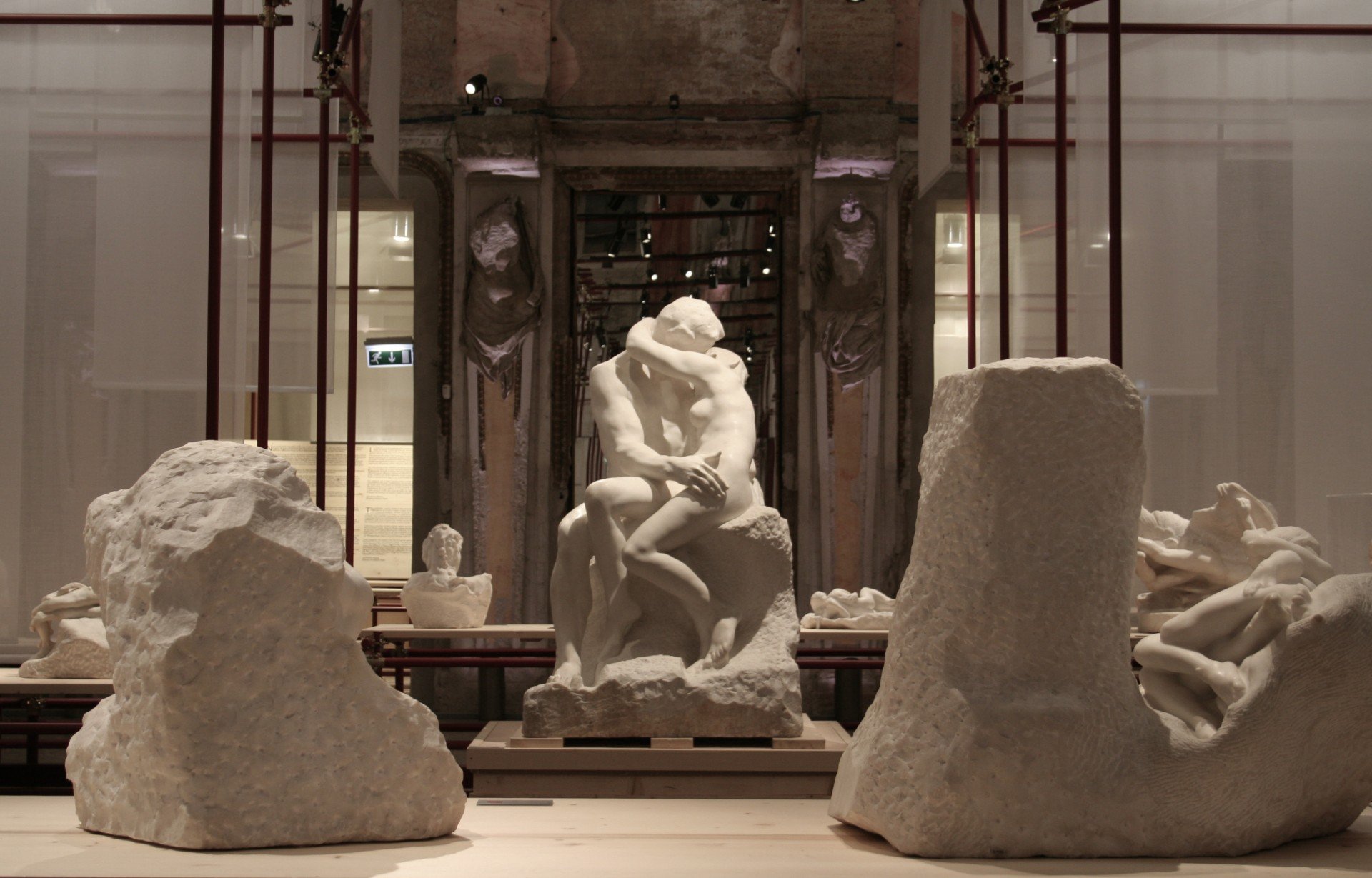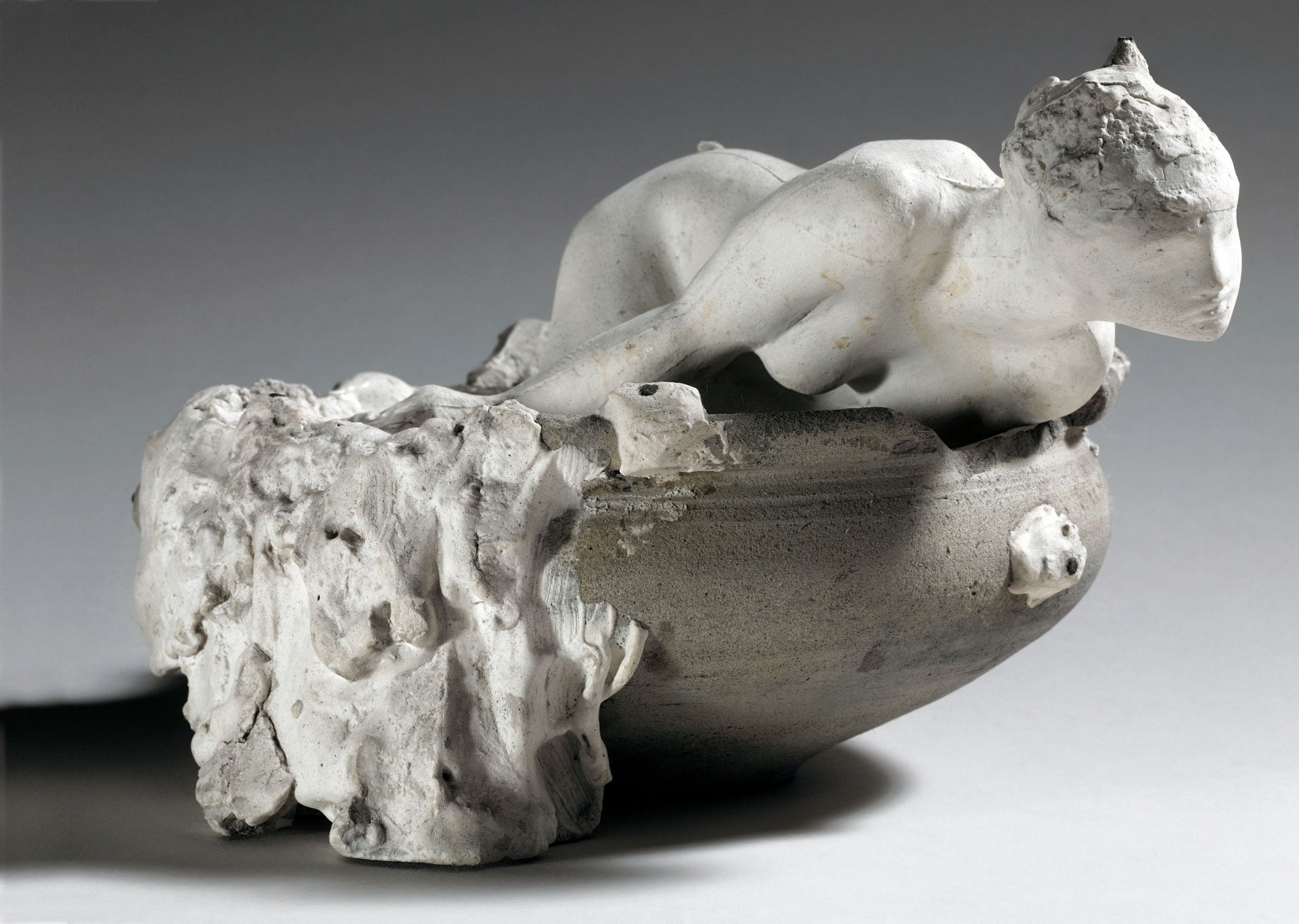Rodin and Michelangelo: idea, control and making of
- Auguste Rodin Show in Milan, © Mario Liguigli
- Auguste Rodin Show in Milan, © Mario Liguigli
- Auguste Rodin, “The fish-woman”, 1917 © Musée Rodin, Paris. Photo by Bruno Jarret/Adagp
- Auguste Rodin, “The small fairy water”, Maquette 1903 © Musée Rodin, Paris. Photo: Christian Baraja
- Michelangelo Buonarroti, Sketches of marble blocks with a template for a crucifixion, sec. XVI, Florence, archives of the Casa Buonarroti Foundation
Until 26 January at Palazzo Reale in Milan, there will be a major exhibition dedicated to Auguste Rodin (Paris 1840 – Meudon 1917): “Rodin. The marble, the life”.
Curated by Aline Magnien, Conservative head of the assets of the Musée Rodin in Paris the exhibition presents over 60 works. This is the most comprehensive show ever to be staged on the marbles by Auguste Rodin, thanks to loans from major public institutions such as the Petit Palais – Musée des Beaux-Arts de la Ville de Paris, the Musée Faure, Aix-les-Bains, the Musée de Picardie, Amiens, and of course the Musée Rodin in Paris.
When talking about Rodin’s art, the most widely used comparison is the one with Michelangelo Buonarroti. It is no coincidence that in the first section of the exhibition (which builds on the idea of the illusion of flesh and sensuality), among the early works by the French sculptor, there is the famous “Homme au nez cassé,” rejected by the Salon of paris in 1864, portrait tribute to the great genius of Michelangelo. The poetics of the incomplete characterizes, instead, the third section of the show. Here is the triumph of the “unfinished”, the linguistic artifact that still refers to the Italian sculptor.
However, besides the overused comparison between the two artists, the exhibition on Rodin is a great starting point to focus attention on the two different ways of conceiving the artistic creation.
The catalog essay by curator Aline Magnien relates that, during his time, art critics accused Rodin of not being able to work with marble. It is believed that he often relied too much on the performance of his workshop. In the nineteenth century the discourse on the relationship between idea and execution was in point of fact brought back to discussion.
On the contrary, Michelangelo Buonarroti kept under control every stage of the realization of his works of sculpture: not only in the phase of design and creation, but even during the extraction of marble. This aspect can indeed be verified in a document that will be exhibited at the Galleria Palatina in Florence, from 28 January to 27 April, in the show ” Once in a Lifetime. Treasures from the archives and libraries of Florence”. The document consists of a small page containing some sketches of marble blocks with a template for a crucifixion, in practice the instructions to “take away” from the mountain some stone blocks including a cross-shaped one ready to be carved. Shown in Vienna in 1997, the document kept in the archives of the Casa Buonarroti Foundation in Italy has never been exhibited in public.
January 24, 2014





